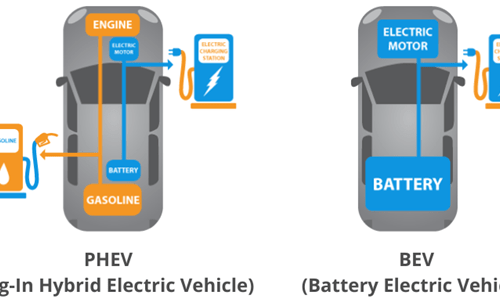
Stories and Lessons From Onboarding Teleworkers

Automation, combined with digitalization and process engineering, will enable organizations to broadly utilize telework, address talent scarcity, and lower production costs. However, even as we make progress with automation, onboarding new employees to a telework-centric organization is emerging globally as a major challenge. Even simple processes associated with employee onboarding can frustrate both the employee and the hiring organization if not properly handled. We break the onboarding challenge of teleworking employees into three parts: addressing the mundane tasks, providing training on the necessary processes, and mentoring. In this post, we examine these challenges through real stories and present the lessons learned.
This is the fourth piece of my collaboration with Nikos Michalakis, VP, Software Platform at Woven Planet Holdings and it also appears on his Red Vest Mindset site.
We have encountered and successfully addressed multiple cases associated with onboarding employees across the US, Asia, and Europe. for telework. We have determined that to address the onboarding challenge associated with teleworking employees, an organization must ensure that the employee:
- Completes the mundane but important tasks that make a new team member productive, and feel welcome, e.g., equipment setup.
- Understands how to correctly apply all the processes that are necessary to become a productive member of the team. This involves the employee’s training and may require existing processes to be re-engineered to make telework successful.
- Appreciates, adopts, and contributes to the organization’s culture.
The employee type plays a role in how these challenges are addressed. Employees who come to the organization with prior work experience, require a different approach from inexperienced ones, i.e., employees for whom this is their first job. For example, the experienced employee may not need a mentor but an employee with some tenure in the organization to act as an “ambassador.” Similarly, an employee who is hired by the organization requires a different approach than the person who is brought on board on a temporary basis.
The Onboarding Technology Novices Story
A large number of employees in an Asian healthcare company work remotely as home aides to ailing people. These aides help homebound patients with a variety of health-related problems, e.g., stroke survivors with severe mobility problems, or patients with critical respiratory problems. To accomplish their daily mission and communicate with health providers when necessary these aides are equipped with a laptop and several connected wearable devices.
Depending on the patient they assist these aides must be able to:
- Properly attach one or more of the wearables to the patient,
- Connect the attached wearables with the laptop,
- Communicate with the appropriate doctor or medical facility,
- Transmit the data captured by the wearables to the healthcare provider, and
- Act on the advice they receive from the health provider.
Some of the advice may require additional data gathering.
Many of the new hires were information technology novices. As part of the new employee onboarding, the company would bring in newly hired employees at its headquarters, train them on the necessary processes, procedures, and equipment, provide them with the necessary pre-configured devices, and register them on the company’s computer systems so that they can have easy remote access. With the company now offering its services in locations far from its headquarters, the in-person training, equipping, and registration of new employees became harder and costlier. The pandemic made the problem more acute because many new employees needed to quickly be hired and onboarded.
In addition to the company developing an online curriculum to train its new hires on the processes, they will need to perform daily, the company’s IT organization developed new procedures for accomplishing the mundane task of remotely configuring the equipment assigned to each aide. These procedures:
- Use a courier service to send to each new hire a laptop with preloaded instruction material.
- Direct the employee on how to connect the wearables to the laptop.
- Instruct the employee how to connect the laptop to the Internet, and properly download a software application that enables the IT organization to remotely configure the employee’s laptop and wearables,
- Configure the employee’s laptop and the wearables.
In developing these procedures, the IT organization had to make sure that they can be successfully performed by both novice and experienced aides, some of whom had experience with computer networking while others not. For this reason, the IT organization also developed AI-based software assistants to help the less experienced employees successfully accomplish the connectivity and data transmission tasks.
The Loss Of Ownership Story
To meet the deadlines of a new product that incorporates several novel technologies, the product organization of an Asian company hired several US-based senior software developers. The software development workload was initially split equally between the US and Asian groups. However, the Asian group was also responsible for supporting the product’s early customers, something that was not made explicit when workload allocation was being decided. Consequently, the US-based group’s development was progressing faster, while the Asian group’s input on technical decisions started to get limited. This impacted the team’s culture because the employees in Asia felt their technical contributions were being taken over by the US group and lost their sense of ownership in the mission.
To address these problems the organization decided to change the process on how the product development teams would continue to interact with the early customers and how they would conduct technical design reviews. The most senior members of the Asian team reduced the time they would spend with customers, created explicit steps on how to conduct reviews across the two geographies, created new documentation standards, and a new procedure on how to triage customer issues.
The Password Exposure Story
The IT team of an organization we interviewed had established a master password to configure laptops and workstations as part of the process to onboard new employees. This organization hires globally. At the start of the pandemic, many of the newly hired employees couldn’t travel to the company’s headquarters and were forced to stay in their home country. In an effort to avoid onboarding delays, it was determined that it would be more expeditious for each employee to purchase a laptop on their own and expense it, rather than wait for months to receive a pre-configured one from the company. Unfortunately, the requirement to use a master password became an obstacle to the onboarding process.
With help from the security team, the IT team had to redesign their onboarding process to enable laptops to be set up remotely without exposing the master password to the onboarded employees. The experience showed that by oversimplifying the onboarding process through the use of a single master password, the IT team failed to take into consideration the potential impact of telework. Before the pandemic, no one could have predicted that using a master password would become an obstacle to the employee onboarding process. The adoption of telework must therefore be considered as a requirement, even in the simplest of processes, as we have explained in our Telework Framework. Telework imposes new and often substantially different requirements to a process that in practice can be painful to implement as this simple incident shows.
The Timezone Burnout Story
In a high-growth Asian software company, due to the pandemic and the unique skill set required due to the type of software being developed, talent to work on a large-scale new software project was only readily available via telework in either the US or the European Union. Because of the project’s early stage and the lack of detailed documentation, the core engineers had to mentor all newcomers, either through meetings or messaging applications. Due to the large time differences between Asia, the US, and the European Union, the engineers in Asia had to start their days very early in the morning to sync up with team members in the US and work until very late in order to collaborate with their European colleagues. After a couple of months, some in the team felt burned out by the long hours to help mentor and bring newcomers up to speed. The strategy to grow the team so quickly had backfired.
The team considered a few options that were a mix of:
- Pause and standardize its work process to reduce meetings and delay their deliverables.
- Become more selective in which teleworkers they onboard and add extra requirements to make their work hours more reasonable.
Ultimately the team decided to take a more selective approach on who they would onboard:
- They focused exclusively on bringing people in from US time zones.
- They requested recruiters to filter out candidates that were not willing to adjust their working hours to overlap longer with Asia until their relocation there. .
The team felt that at their early stage of the discovery phase in the product, not much could be clearly standardized, nor well-defined tasks assigned to each member. So, having constant conversations and brainstorming were important to keep a consistent vision. The manager decided to pass on some amazing candidates in the EU because the team made it clear that it was more important to have close mentorship relationships and work-life balance.
Conclusions and Lessons Learned
As more corporations adopt remote work in general, and telework in particular, they will need to effectively address the challenge associated with employee onboarding. We have broken this challenge into parts: addressing the mundane but necessary tasks that enable the new employees to gain access to the organization from the beginning, training employees on the important processes particularly those that will need to be performed when they are away from the worksite, and mentoring employees to help them connect with the organization’s culture. Through our work in this field, we have learned that:
- Resources such as IT support, knowledge-sharing infrastructure, and others must be always available.
- The right training (human and self-serve) needs to be developed and constantly adapted to take into account employee learning preferences. Sometimes a process that has organically evolved before the adoption of telework may need to be rethought to maintain team balance.
- A mentor, or “ambassador” depending on the onboarded employee’s work experience, must be assigned to the employee and be readily available to help the employee understand and integrate into the organization’s culture. Managers should also keep an eye on mentor issues so they can adjust their hiring practices.
Previous article in this series




Leave a Reply